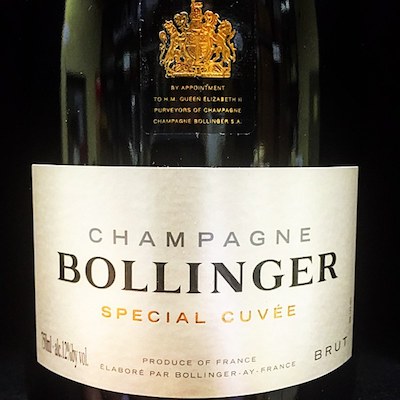7. Bollinger Brut Special Cuvée ($70)
Fun fact: When James Bond foregoes his signature martini for a glass of bubbly, he orders Bollinger. And with good reason: It’s indisputably one of the masters of the genre. Aromatic and complicated, with itsy bitsy starry bubbles and a liquid-gold hue. Baked apple, spices, peach, a bit of walnut, brioche and pear. Superb structure and luscious texture. Not exactly a Tuesday night price point for most of us, but if you occasionally find yourself with a bottle in your hand you’re never going to regret it. Bollinger is one of the greats. Pairings: the sky’s the limit with this one, but do your palate the favor of making it something created with care. If you choose to add a side of Dr. No, that’s perfectly reasonable.
6. Nicolas Feuillatte Brut Reserve NV ($40)
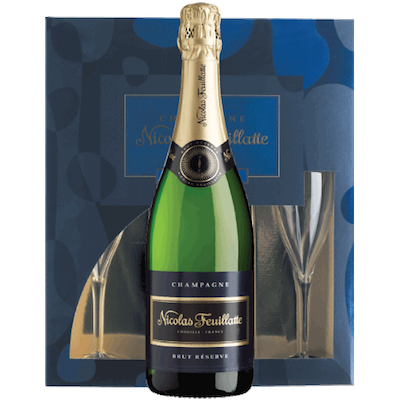
This is a very affable wine, and while it’s more of a splurge than, say, a Spanish cava, it’s far from the priciest bottle on this list. On the delicate side, crystalline and almost silvery in the glass, meandering, unending bubble-streams. A tad shy on the approach but the nose unfolds into a floral and white nectarine and pear thing, and with a little time, starts to show complicated notes of riper fruit, and savory spices (like curry? Maybe fenugreek?). Dry and fresh with a light finish. A bit reserved, but a great friend once it opens up. Try it with something that echoes those spice notes or just enjoy it as an aperitif.
5. Egly-Ouriet Brut Tradition Grand Cru ($80)

This Champagne flies a bit under the radar. But bring it as a host gift if the host in question is a wine connoisseur and you will secure a permanent spot on that person’s guest list. It is a wine-geek’s wine. Nose of peaches, piecrust, almond or marzipan and a little sweet cherry. A kind of lemon curd thing unfolds on the palate, along with tart green apples, orange rind, mineral notes and spice. Deep, deep depths to this stuff and a molten-gold color that’s totally gorgeous. It’s a complex and impressive concoction and absolutely as good as or better than plenty of champagnes for which you shell out a good deal more.
4. JM Gobillard et Fils Millesime 2010 ($60)
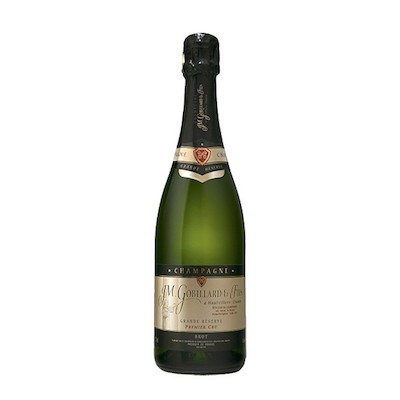
The term “Millesime” is common in perfumery; in describing Champagne it means the same thing: extra-high quality. And this is some pretty fine stuff. Be careful opening this one if you’re flying solo: You will drink the entire bottle and then start sending racy text messages to your ex by accident. Sleek, structured, finesse in a glass. Straw color, lovely aromatics (violets and strawberries), persistent perlage, and pleasant mix of fruity and pastry-like notes. A beauty. Broadly food-loving but I happen to like this one best paired with an empty house and a movie I didn’t have to negotiate with anyone about.
3. Champagne Krug Vintage Brut 2000 ($300)
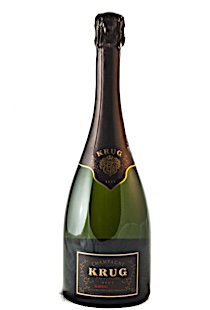
See, this is a really good example of “it’s personal,” sub-clause “I only tried it once and I recognize it’s fabulous but I can’t really afford it, which inherently makes it less good for me personally.” Many people venerate this Champagne. It deserves a high rank for its complete awesomeness, but I get more excited about makers like Lucien Albrecht or Boschendahl, who make utterly delicious wines you can actually drink without taking out a home equity line. If you’re the kind of person who can drop $300 on something you will, let’s just say it, turn into pee, then you know what? Skip the Dom Perignon and the Cristal and whatever else, and get this. It’s a pretty kowtow-worthy wine. It’s a sucker punch with a huge towering presence, incredible complexity, and serious aging power. Notes dominant in this vintage now? Nougat, caramel, roasted nuts, candied citrus zest, ginger, pastry, and a long lime finish. Rich and luxuriant with intriguing salinity. Deep gold color, unapologetic opulence. Try it at least once. Especially if someone else is paying for it! This wine is the Emperor of “I am the occasion” special-occasion wines. I knew someone whose dad bought a high-end Napa Cabernet from the year she was born and opened it with her on her 21st birthday. This is a wine I’d do that with.
2. Charles Heidsieck 2006 Rose ($150)
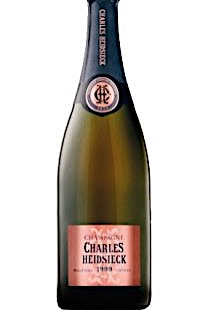
If you like your Champagne on the intense side with a slightly less intense pricetag, this is your guy. There’s an immediacy and power to this stuff. Apricot tone in the glass, beautiful bubbles, massively aromatic nose reminiscent of strawberry jam, baking spices and honey. Creamy mouthfeel, and a highly nuanced and rather eccentric palate—plums, piecrust, blackberries—I even get some rather unexpected spice notes; Is that cumin? Fennel? Before you figure it out it reveals a deeper layer that expresses tea, figs, and pink peppercorns. If that list of aromatics sounds odd or intimidating, don’t sweat it—it’s amazingly seamless and, with all due respect to La France, the stringent regulations on what you can call Champagne result in consistent greatness but also … predictability. There is a certain limited range of flavors. Heidsieck has managed a very surprising one here. So … if you’re planning to surprise someone special, this might be the moment to pop the cork on a bottle of this nectar.
1. Billecart-Salmon Brut Rosé ($80-$100)
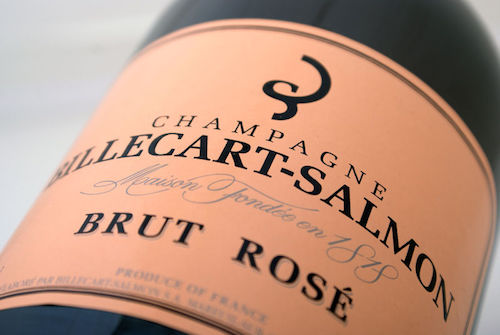
This might not be your desert island wine, but it is mine (assuming my desert island has refrigeration). Is it empirically the best Champagne there is? There is no such thing as empirical or best where wine is concerned: We love what we love, and we tend to have certain emotional responses to certain flavors or smells. This one happens to go to my heart as well as my head. Never-ending, beautiful effervescence, pale coral color with a hint of gold, nuanced nose (alpine strawberry and pear play the leads). Crisp and ethereal, with hints of black cherry, chalk, rose petals and damson plum. Creamy yet light on the finish, focused and direct with a pleasant astringency and pretty much perfect balance. There’s something ineffable about this stuff—it’s fresh and brisk and airy but at the same time substantial. If you could bottle happiness it would probably taste a lot like this.

